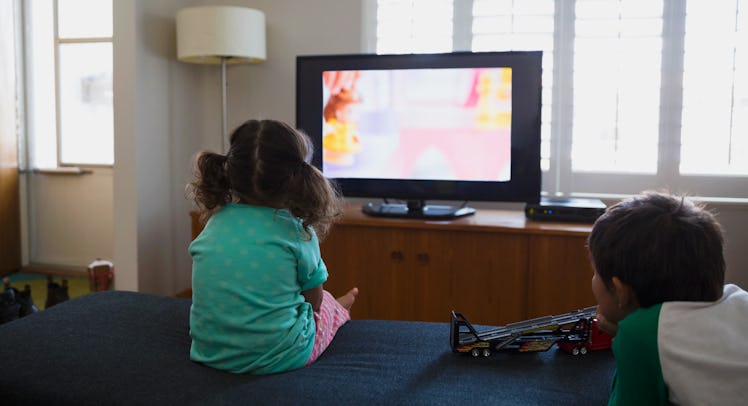Scientists Discover Some Cartoons Are Better for Kids Than Others
Kids who watch cartoons with the right story structure don't just zone out when they watch. They might even learn something.

Watching cartoons can be developmentally beneficial for children, but not all kids’ show are created equal. Rather than focus on the vocabulary, the violence, or even the show’s subject matter, new research suggests that the structure of the stories themselves is what makes all the difference. Cartoons that follow a traditional narrative structure with a rise, peak, and fall may improve children’s ability to comprehend and remember important morals about how to treat other people.
Past studies have compared cartoons that follow a narrative form to cartoons that are more manic and less structured and found kids were better at recapping the details of narrative stories. When they watched non-narrative cartoons, their recollections were more limited to simple descriptions like “it was about fighting.” Other research indicates that children’s ability to construct their own narratives increases with age, so exposing them to the structure could be developmentally significant.
A team of social scientists suspected this might be extra important because children’s capacity to comprehend the stories could affect what values, emotions, and morals they pick up on in the story. To test this, the researchers recruited 186 students between the ages of 7 and 13 and assessed their overall attention spans, in order to control for this when testing comprehension. Then participants were broken into two groups — one was shown the cartoon Doraemon, which had a narrative structure, and the other watched an episode of the non-narrative cartoon Code Lyoko. While narrative cartoons had the aforementioned arc, non-narrative shows relied on what researchers refer to as “clinchers,” such as loud sounds, cutaways, and disappearances and reappearances of certain characters. Then the researcher had children retell everything the cartoons were about, including certain morals and values.
The results, published in the Annals of Psychology, revealed that children understood and could recall far more of the story when they watch narrative cartoons, and this influenced comprehension more than other variables such as age, gender, attention span, and socioeconomic status. “Unlike other works of research that have studied these variables separately or partially, this work has considered all of them conjointly,” the researchers noted.
Still, the study authors are careful to note that the data does not necessarily mean that all non-narrative cartoons are bad for kids. In fact, the non-traditional structure does allow creators to pack more information into an episode, which could be useful with a specific educational goal. Granted, the cartoons used in this study did not appear to do this, and the authors note further research is needed to explain why. The experiment was also limited by a small sample size and researchers recommend results be replicated in further research before drawing any firm conclusions.
Children generally thrive with a bit of structure, and this study would suggest this reality is reflected in the kinds of cartoons they watch. It’s important for children’s media to classify — and for parents to take note of — the different types of cartoons as narrative or not, so kids can get healthy exposure to narrative skills, even when they’re “just” watching cartoons.
“Continued exposure over time to this kind of episode may have an influence on narrative skill and the values system that the student is constructing,” the authors concluded. “So emphasizing consideration of formal aspects in fictional content for future research, as well as their educational implications, proves necessary.”
This article was originally published on